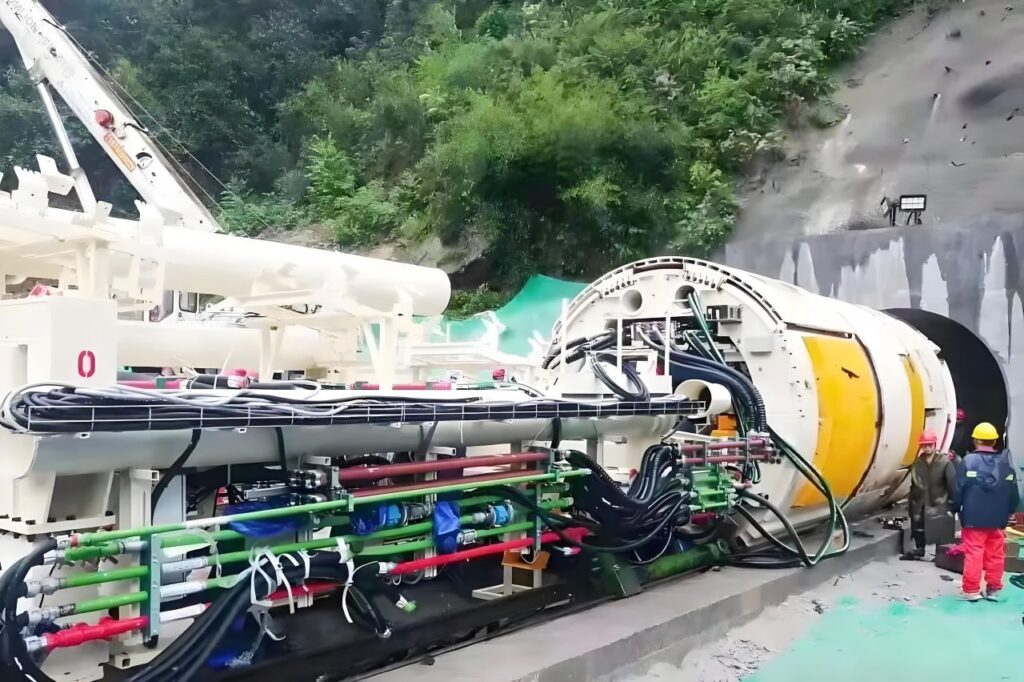Tunnel boring machines (TBMs) are large, complex, and difficult to remove once a tunnel is completed. The removal process depends on the type of tunnel, the size of the TBM, and the project's specific needs. Here are some common methods for removing TBMs:

1. Disassembly in the Tunnel:
- In many cases, TBMs are disassembled into smaller parts inside the tunnel after the excavation is complete. The components are then transported out of the tunnel using trains, conveyor belts, or trucks.
- This approach is used in tunnels where there's sufficient space and access to break down and remove the machine piece by piece.
2. Abandonment:
- Sometimes, especially in long tunnels or those with difficult access points, it may be more practical to leave the TBM in place. The machine is sealed off in a chamber, often filled with concrete, behind the tunnel wall.
- This is common in tunnels where removing the machine is not cost-effective or technically feasible.
3. Extraction at the Tunnel's End:
- In projects where the tunnel has an open end, such as when the TBM breaks through at the end of the excavation (often called "breakthrough"), the machine can be pulled out from the exit point.
- The TBM may be disassembled and removed from the surface after the breakthrough if the machine can be easily accessed.
4. Vertical Shaft Removal:
- For deep tunnels, a vertical shaft can be dug from the surface down to the tunnel, and the TBM can be lifted out using cranes or other lifting equipment.
- This method is used in cases where removing the TBM through the tunnel itself is impractical due to distance or size constraints.
5. Reuse and Relocation:
- If the TBM is still in good condition after completing the tunnel, it may be refurbished, transported to a new project, and reused. This usually involves disassembling and shipping the machine.
Tunnel Boring Machine Removal Steps
Step 1: Pre-Removal Planning
Before a TMB can be extracted, extensive planning takes place to ensure smooth operation. Engineers assess the site conditions, including soil type, groundwater levels, and proximity to existing structures. They also evaluate the size and configuration of the TBM, as well as potential access points for removal. A detailed plan is developed that includes logistics, safety protocols, and contingency measures in case unexpected issues arise during extraction.
Step 2: Preparation of Extraction Site
The chosen location for extracting the TBM must be prepared to accommodate its weight and dimensions. This often involves creating an excavation or shaft large enough for the machine to fit through. The ground around this area needs to be stabilized using techniques such as grouting or dewatering to maintain structural integrity and prevent collapse.
Step 3: Disassembly and Extraction
Once the site is ready, disassembly begins. TBMs are typically broken down into manageable sections, starting with the cutter head and shield at the front end. These components are then lifted out of the shaft using cranes and placed onto trucks for transportation. The remaining sections of the machine follow suit until only the rear trailing gear remains inside the tunnel.
Step 4: Removing Trailing Gear
The trailing gear, which contains critical systems like conveyors, support beams, and hydraulic lines, poses unique challenges due to its length and complexity. It may require additional cutting or dismantling before it can be safely pulled back through the tunnel or lifted out via the extraction site. Careful coordination ensures that all parts are accounted for and removed without causing any damage to the newly formed tunnel walls.




